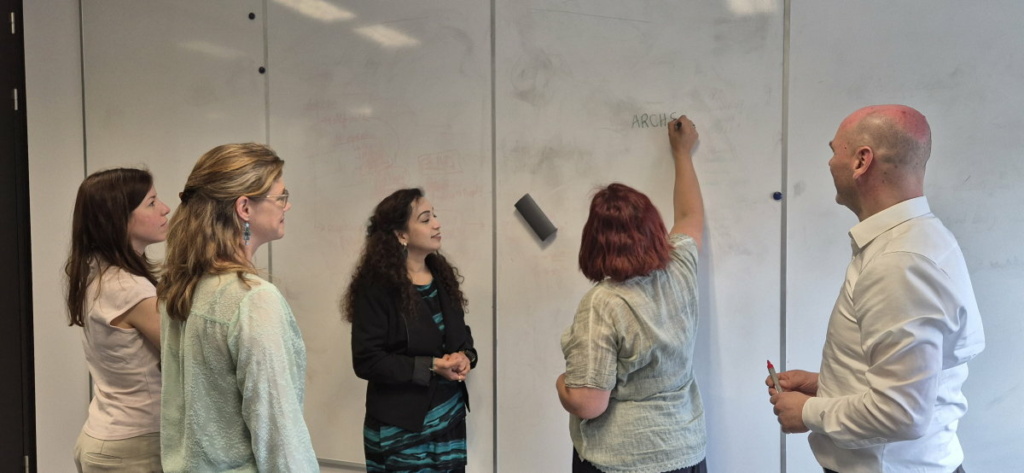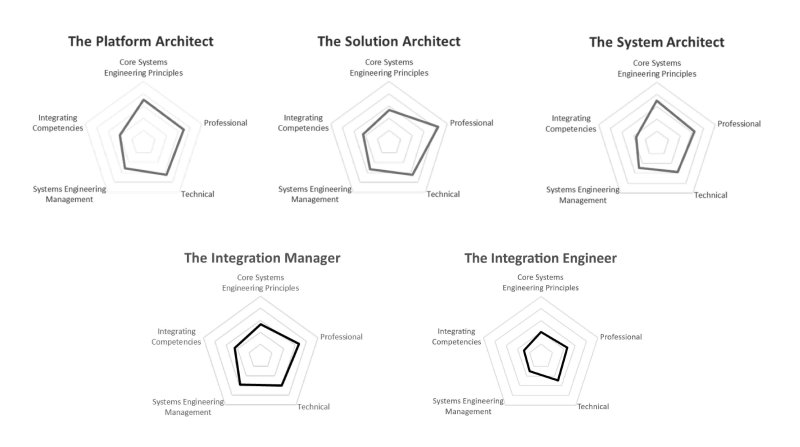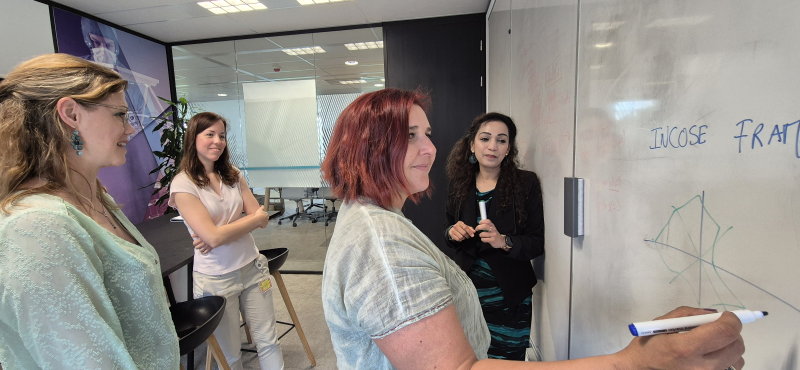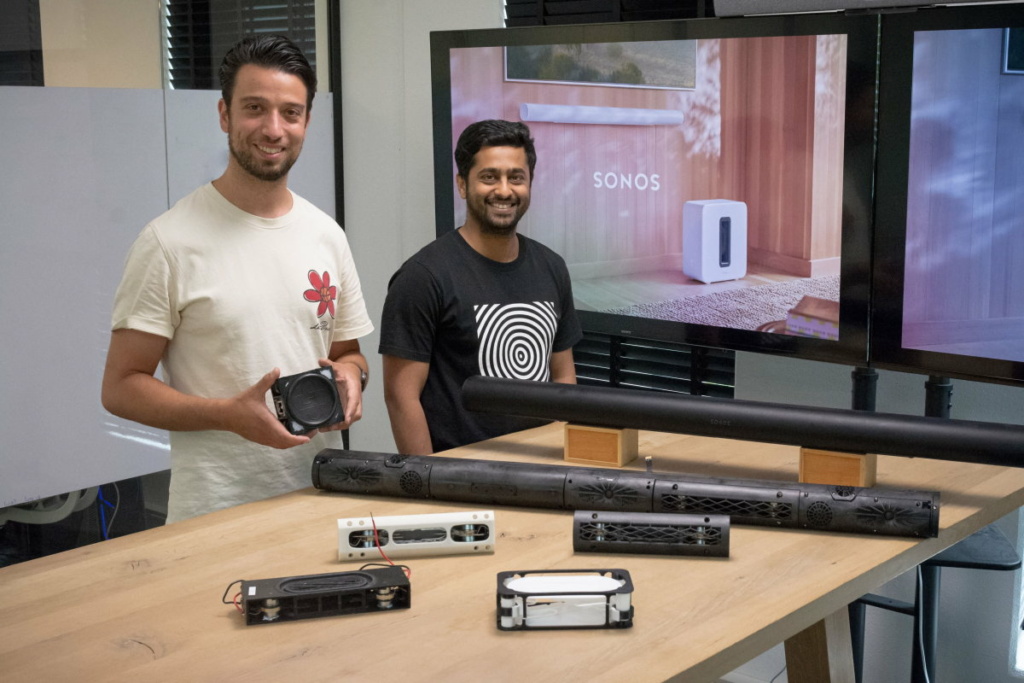Your cart is currently empty!

Future-fitting systems engineering skills across organizational boundaries
Vanderlande and TNO-ESI joined forces to map the skills architects and integration specialists need, to streamline the development of increasingly complex systems. The collaboration has yielded a tailored competency framework and a replicable methodology for other high-tech companies.
Vanderlande has made a strategic shift toward “configure to order” – building more modular, standardized solutions rather than bespoke systems. At the same time, the logistics automation specialist’s systems are becoming increasingly complex and software-intensive. These developments demand new competencies from the engineering workforce, prompting the Veghel-based company to critically reflect on whether its organizational capabilities are still fit for the future.
This reflection revealed significant organizational challenges. Vanderlande’s structure includes distinct project and R&D divisions that often operate in silos, with the project side serving customers while R&D focuses on technology development. “This creates a communication gap, for example in aligning the requirements, with both sides asking: are we speaking about the same things?” says Radhika Nedungadi, manager of platform integration and quality at Vanderlande. The fragmentation has led to inconsistent terminology and approaches, even among professionals holding similar roles across different parts of the organization.
Adding complexity, R&D embraced agile methodologies while the project side maintained traditional approaches. This created a fundamental mismatch where teams worked at different speeds and with different mindsets. “Getting to customers with a new way of working proved extremely difficult under these conditions,” notes Nedungadi.
These challenges reflect broader high-tech industry trends that TNO-ESI has been closely monitoring. The research organization has identified several key shifts affecting the entire sector: increasing system complexity and criticality, suppliers climbing value chains, growing industry collaboration needs and high demand for scarce experts who need to keep up with constant innovation. “The landscape of R&D and engineering is changing,” observes Joana Teixeira, competence development manager at TNO-ESI. “These changes are compounded by work environments that have become multidisciplinary, geographically dispersed and culturally diverse.”

Recognizing the challenges, Vanderlande and TNO-ESI initiated the Archskills project. The fundamental question was whether architects and integration engineers are truly prepared for the future, starting with the next five years. The collaboration aimed to assess competency gaps, address technical and professional skills and improve cross-organizational communication using common language.
Benchmarking
Within Archskills, which ran from the beginning of 2024 to the beginning of this year, Vanderlande and TNO-ESI built on the established competency framework provided by INCOSE (International Council of Systems Engineering) rather than starting from scratch. The framework distinguishes 36 competencies across five groups, assessed from awareness to expert levels. “Not wanting to reinvent the wheel, we looked at what’s out there that we could use as a starting point,” explains Teixeira.
The year-long project began with extensive input collection from Vanderlande. To understand the organizational structure and different ways of working across the company, TNO-ESI conducted calibration interviews with representatives from five key roles: integration engineers, integration managers, systems architects, platform architects and solution architects. A critical step here involved converting the competency framework from a static document format into a dynamic survey tool that could be used for ongoing assessment.
Following the calibration, numerous brainstorming sessions, reflection meetings and workshops brought together professionals from the different silos to discuss the outcomes and the desired changes. Nedungadi: “We had extensive debates about framework relevance and organizational needs.” The BAPO model was used to structure the discussions around business, architecture, process and organizational aspects.
The collaborative process also involved benchmarking with other high-tech companies to validate the findings and ensure broader applicability. Canon Production Printing and Thales participated in workshops to compare their experiences and challenges, confirming that the competency gaps identified at Vanderlande were representative of wider industry issues. This validation process helped refine the framework and methodology, making it more robust and applicable to other organizations.
No superheroes
One of the project’s achievements was the identification of two additional competencies that weren’t explicitly covered in the original INCOSE framework. “The first addresses openness to change, so being receptive to the unfamiliar and staying current with new technologies and business context changes. The second focuses on personal ownership, emphasizing proactivity in seeking solutions and taking responsibility for outcomes,” Teixeira elaborates. “We added both to the framework.”
To make it more accessible to HR and educational professionals, the team undertook a comprehensive revision of the framework’s language. The original INCOSE descriptions were too technical for practical implementation in hiring, training and career development processes. This accessibility improvement was crucial because the framework is to be used across different organizational functions, not just by systems engineers. The project also introduced topics not explicitly addressed in the original framework, including the need for continuous innovation and technology updates, as well as sustainability considerations.
For each of the five roles, spider graph profiles were produced, showing the relative importance of different competencies. These visual representations help organizations understand competency requirements at a glance and identify where development efforts should be focused. The survey format makes it easy to assess current capabilities and track progress over time, while the structured methodology ensures consistent application across different teams and departments.

The project revealed that successful systems engineering relies more on team capabilities than individual expertise. During the calibration interviews, professionals often overestimated required competency levels for their roles. This insight shifted the focus from creating superhero individuals to building complementary teams where different members contribute specialized competencies.
Bridging gaps
Vanderlande is now actively working to see how to implement the framework across the organization. The company is planning to conduct gap assessments to understand current competency levels among team members and developing targeted training programs to address identified needs. The Vanderlande Academy is mapping existing training programs to the new framework while creating learning journeys for different career progression paths.
The framework is also under consideration to be integrated with HR processes, including performance reviews and career development planning. Vanderlande is updating job descriptions and role definitions to reflect the new competency requirements, creating clearer expectations and responsibilities for systems engineering roles. This enables role interchangeability across organizational boundaries, bridging original communication gaps.
For TNO-ESI, Archskills has opened new avenues for validating and expanding the methodology. The organization plans to apply the same approach with other industry partners like Canon and Thales. The project has also strengthened relationships with INCOSE, with the international organization incorporating insights from the Vanderlande collaboration into their framework development. “After Archskills ended, we got in touch with the INCOSE group that owns the framework and we provided the input that we got from the project,” Teixeira points out.
The collaboration represents an important expansion for TNO-ESI into socio-technical challenges, complementing its traditional focus on technical problems. The experience has reinforced the importance of considering human and organizational factors in technology development projects. The insights gained have also contributed to ESI’s involvement in the Nxtgen project to build comprehensive education frameworks for systems engineers across knowledge institutions.

Ongoing attention
Looking ahead, both organizations see their collaboration as the foundation for a longer journey. Vanderlande is preparing a plan to scale the framework across the entire company. It’s also exploring how to use it for broader organizational development, extending beyond the initial five roles to encompass other engineering functions.
TNO-ESI is working to validate the methodology with additional industry partners, aiming to establish it as a standard approach for competency development in the high-tech sector. The survey format and structured methodology make it possible to reach larger audiences. The organization is also exploring how the framework can be integrated into educational programs, potentially influencing how systems engineers are trained from the beginning of their careers.
The relationship with INCOSE continues to evolve, with TNO-ESI now participating in regular meetings with the group that develops the international framework. While the two additional competencies identified in the Vanderlande project haven’t yet been incorporated into the official framework, they’re being considered for future versions. The collaboration has also highlighted the need for more dynamic, model-based management of competency frameworks rather than static document-based approaches.
The Archskills project collaborators conclude that the rapidly changing technology landscape requires ongoing attention to competency development. The methodology they’ve developed provides a structured way to revisit and update competency requirements as new trends emerge. “The project closure wasn’t the end; it was the start for Vanderlande,” Nedungadi emphasizes. “Working with TNO-ESI was like having a skilled guide on a challenging mountain hike. They’ve given us the tools to navigate the peak on our own.”
This article was written in close collaboration with TNO-ESI. Top image credit: TNO-ESI


